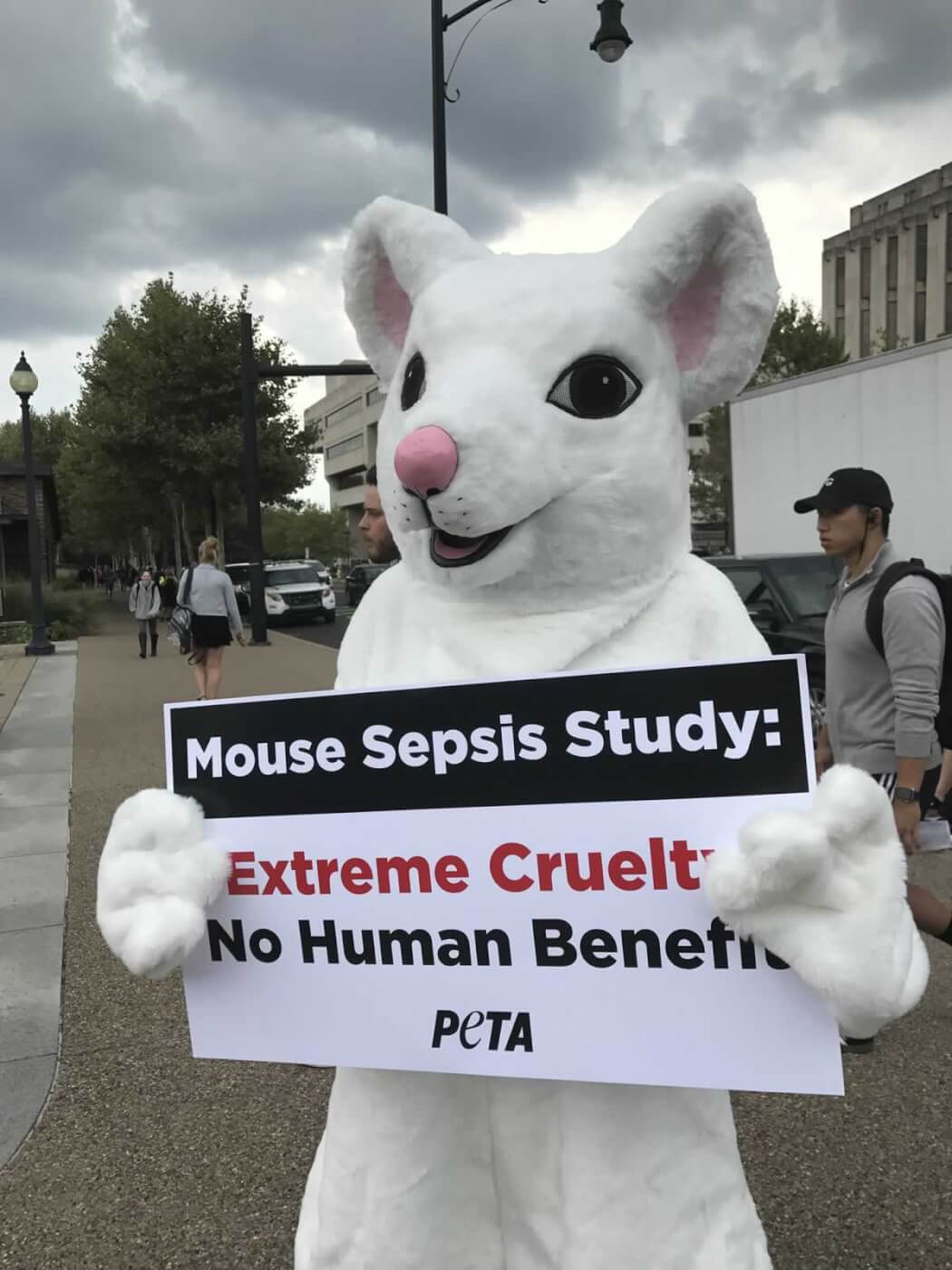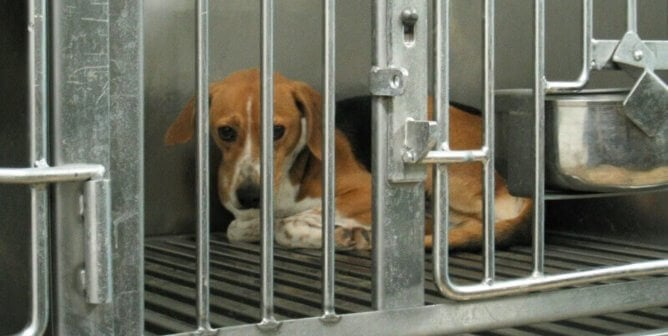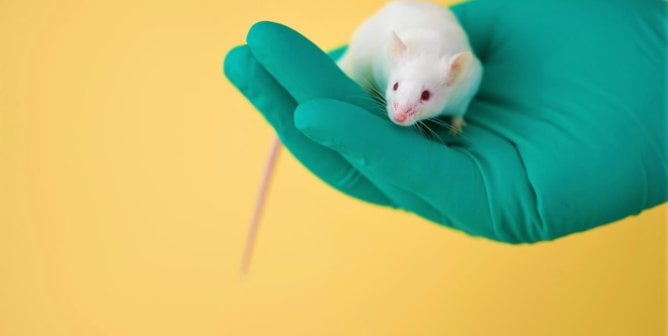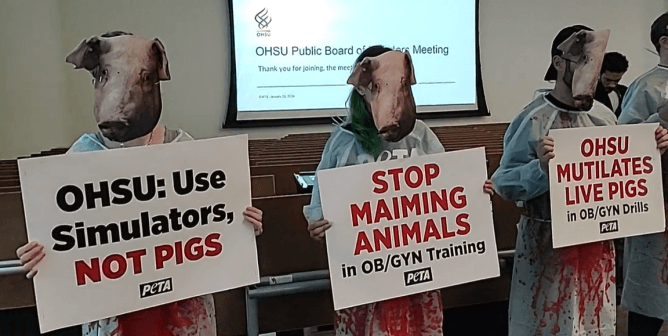Immune systems are designed to keep the body healthy and fight off illnesses. But what happens when they go into overdrive and begin attacking the very tissues that they’re supposed to protect? This serious condition is called sepsis—and it affects at least 1.7 million adults in the U.S. each year, killing nearly 270,000 of them.
Despite this, sepsis experimenters opt for cruel, unreliable tests on other animals, rather than pursuing modern research methods. The more you learn about this potentially deadly illness, the more you’ll want to push for PETA’s Research Modernization Deal, which outlines a plan to replace tests on animals with human-relevant methods.
So, here are the facts on sepsis—what it is, why sepsis experiments on other animals are useless, how PETA’s progressive plan will push sepsis research forward, and more.
What Is Sepsis?
Sepsis—the body’s extreme response to an infection—develops when the chemicals that the body releases to fight off an infection cause inflammation throughout the entire body instead.
How Does Sepsis Affect the Body?
The fatal toll of sepsis—which contributes to anywhere from one-third to one-half of all in-hospital deaths—is partially because of the rapidity of its progress. If it isn’t detected and addressed as soon as possible, it can lead to septic shock—a significant drop in blood pressure that causes heart failure, organ failure, strokes, and death.
What Treatments Are Available for Sepsis?
Despite decades of sepsis experiments and dozens of clinical trials, there are no specific treatments for sepsis—or even new, effective technology to diagnose it. This is alarming, considering that the early diagnosis of sepsis is critical (sometimes even the difference between life and death). Current treatments for sepsis patients focus on controlling the underlying infection, but with the difficulty of detecting sepsis in the first place, these methods often fail.
It’s no surprise that there haven’t been major advancements in sepsis research when many laboratories are still using the same failed methods—experiments on other animals, who are poor models for studying human illnesses—instead of prioritizing modern research.
Why Do Experimenters Use Mice in Sepsis Experiments?
Mice are the animals most commonly used in sepsis experiments, even though their biology and physiology differ vastly from those of humans. Experimenters exploit and kill mice in these tests simply out of convenience—the animals are cheap, plentiful, and small.
Are Mice Reliable Models for Studying Sepsis in Humans?
No. All sepsis treatments developed using mice have failed in human trials because the results produced by tests on mice don’t translate to humans.
In a landmark 2013 study, 39 researchers from Stanford University, Harvard University, and other esteemed institutions found that when it comes to serious inflammatory conditions such as sepsis, burns, and trauma, results from mice can never be applied to humans because of their vastly different genetic responses.
Even Francis Collins, the director of the National Institutes of Health (NIH), acknowledged the time and resources wasted on sepsis experiments on mice. He called the catastrophe—in which 150 drugs successfully treated sepsis in mice but failed in human trials—a “heartbreaking loss of decades of research and billions of dollars.”
What Do Sepsis Experiments on Mice Entail?
In laboratories across the U.S., animal experimenters use cruel and invasive methods to induce sepsis in mice. They puncture the animals’ intestines so that fecal matter and bacteria leak into their stomachs, insert stents into the animals’ colons so that the fecal matter leaks continuously into their bodies, and shove thick gavage tubes down the animal’s throats and pump harmful bacteria into their stomachs. In a test reminiscent of The Human Centipede, experimenters stitch mice together along the length of their bodies, inject toxins into them, and introduce feces from one mouse into the abdominal cavity of another.
Then, the infection ravages their small, fragile bodies, causing debilitating abdominal pain, difficulty breathing, and multi-organ failure. They eventually become so sick that they’re unable to move.
What Are the Alternatives to Using Mice and Other Animals in Sepsis Experiments?
Human-relevant research methods, like human-cell and computer modeling, can help scientists explore how sepsis progresses, how it affects individuals differently, who is more at risk, and much more—and these methods have been hailed by experts. A 2015 study conducted by veterinarians, animal technologists, and scientists found that human genomic information could “replace the need for mouse models in disease discovery and drug development.”
PETA has relentlessly pushed the scientific community to embrace these methods. Our actions have included organizing eye-catching demonstrations, releasing a shocking eyewitness investigation, gathering hundreds of thousands of e-mails from supporters, and presenting the case against using animals in sepsis experiments at an international scientific conference. Finally, in 2019, NIH announced its intention to prioritize animal-free research. This is just the beginning.
No Matter What, Other Animals Don’t Belong in Labs
Mice are sensitive and intelligent, and they care about their families and peers. Mutilating, poisoning, and killing them in laboratories isn’t just wrong because these experiments are useless—it’s wrong because mice feel.
Help individuals trapped in labs by taking action below:






